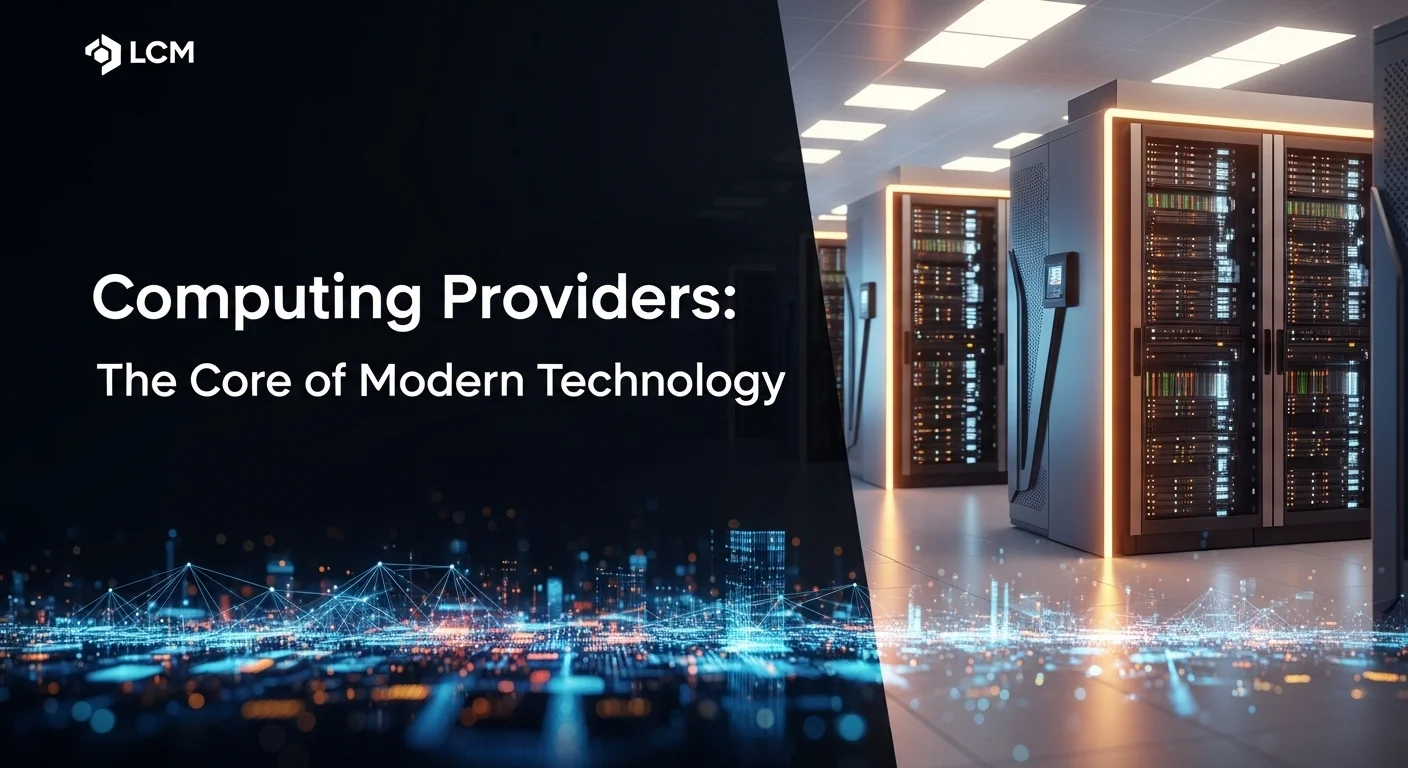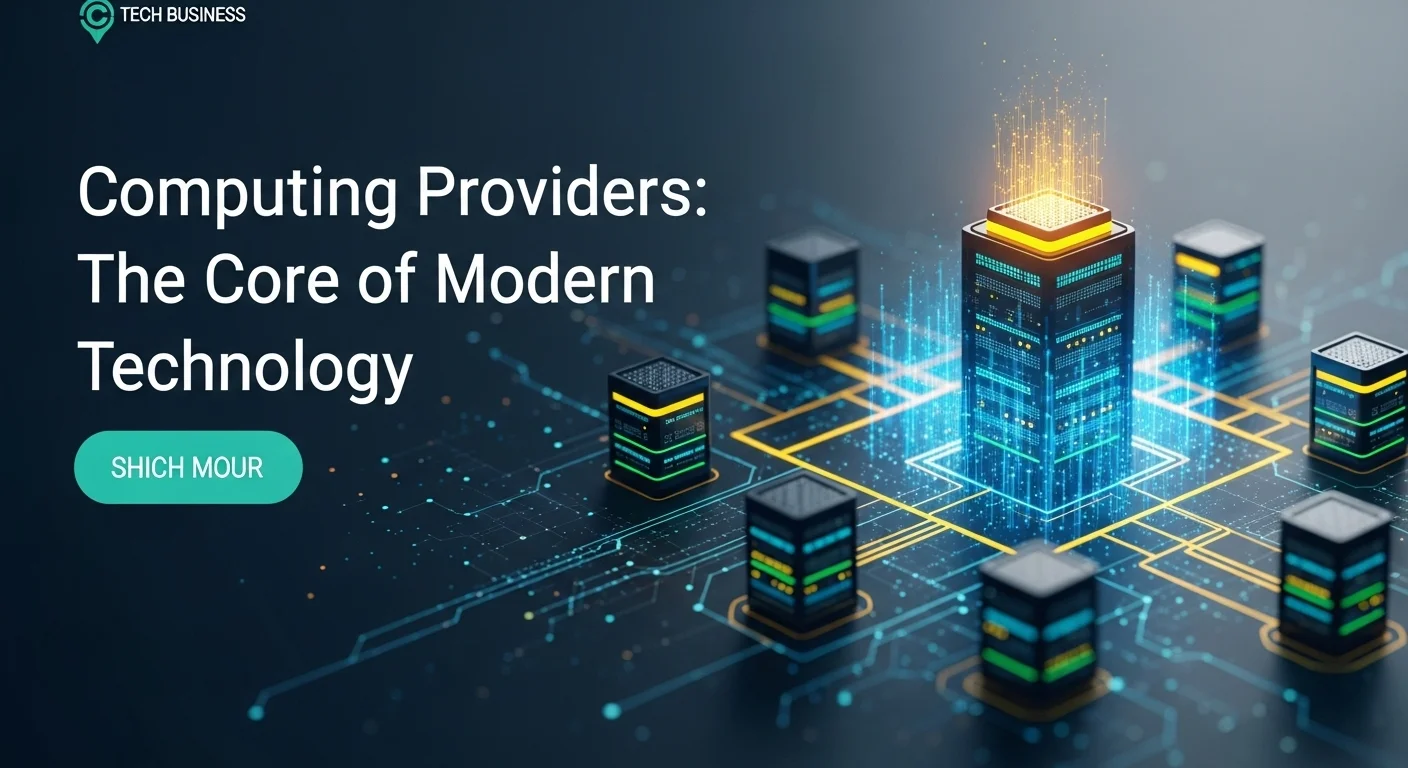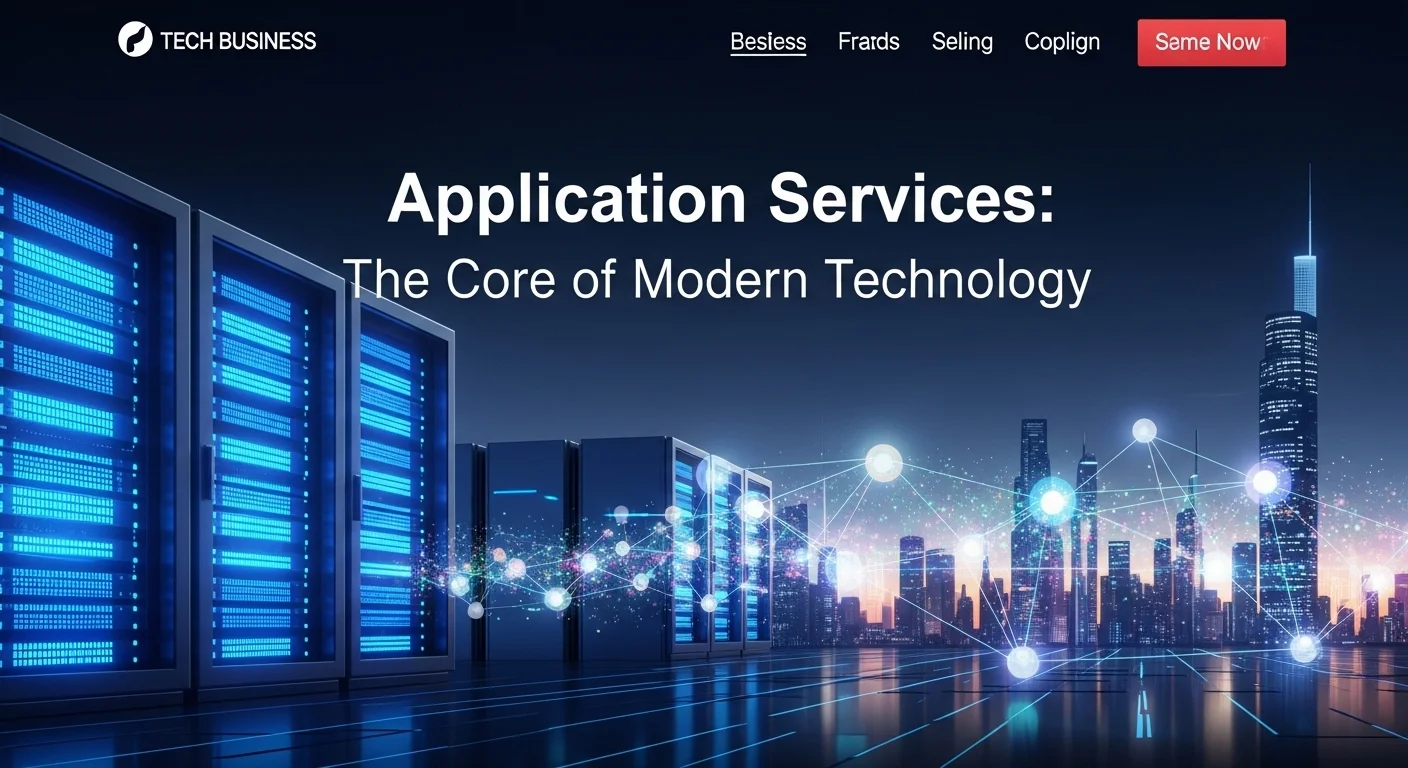What Are Computing Providers? A Simple Guide to Choosing the Right Cloud Partner

Executive Summary
In my years as a cloud architect, I've seen countless businesses transform by moving to the cloud. But I've also seen the confusion that terms like 'IaaS' or 'PaaS' can cause. At its heart, a computing provider is a company that rents you computing power, storage, and software over the internet. This shift away from buying and managing your own physical servers is one of the biggest game-changers in modern business. It allows a startup to wield the same power as a massive enterprise, all without a hefty upfront investment. This article is my personal guide to demystifying this world. We'll break down the core concepts in simple terms, walk through how to choose the right partner for your specific needs, and share some insider tips I've learned for managing costs and security. My goal is to give you the confidence to leverage these incredible tools to help your business thrive.
Table of Contents
- What Exactly is a Computing Provider?
- The Core Service Models: IaaS, PaaS, and SaaS Explained
- Why Moving to the Cloud is a Strategic Game-Changer
- Your Framework for Selecting the Right Provider
- Comparing the Titans: AWS vs. Azure vs. Google Cloud
- Pro Tips for Mastering Your Cloud Experience
What Exactly is a Computing Provider?
In today's digital world, you hear the term 'cloud computing' everywhere, but what does it really mean for a business? Think of it this way: for decades, if you wanted to run a business application, you had to buy your own physical servers, find a room to store them in, manage the power and cooling, and hire IT staff to maintain them. It was expensive, slow, and rigid. A computing provider, or cloud provider, changes all of that. It's a company that owns and operates massive data centers full of servers, storage, and networking equipment, and they rent you access to that infrastructure over the internet. This simple idea, often called cloud computing, has completely reshaped the technology landscape. It’s the invisible engine behind everything from your favorite streaming service to the apps you use to run your business. By letting a provider handle the complex and costly work of managing hardware, you and your team are freed up to focus on what you do best: innovating and serving your customers. This isn't just a technical shift; it's a strategic move that provides agility and power that was once unimaginable for most companies.
The Core Service Models: IaaS, PaaS, and SaaS Explained
To really get a handle on the cloud, it helps to understand the three main ways these services are delivered. I like to use a simple analogy: building a house. The models are known as IaaS, PaaS, and SaaS.
Infrastructure as a Service (IaaS)
IaaS is like being given a plot of land and access to all the raw building materials—lumber, concrete, pipes. You get the fundamental components: virtual servers, storage, and networking. With IaaS, you have the most flexibility. You choose the operating system and build everything on top of it exactly how you want. This is perfect for companies that want fine-grained control or need to move existing, complex systems to the cloud. When you hear about Amazon EC2, Azure Virtual Machines, or Google Compute Engine, that's IaaS in action. You're building from the ground up, but on someone else's land.
Platform as a Service (PaaS)
PaaS takes it a step further. Imagine being given that same plot of land, but the foundation is already poured and the framework of the house is built. You also get a full set of power tools and a construction crew on standby. PaaS provides the infrastructure *plus* the operating systems, development tools, and database management systems. This is a dream for software developers. They can just show up and start building their applications without ever worrying about server updates or maintenance. It drastically speeds up the creation and launch of new products. Services like Heroku or Google App Engine are classic examples of PaaS.
Software as a Service (SaaS)
SaaS is the most familiar model for most people. This is like renting a fully-furnished, move-in-ready house. The provider has built the application, manages the infrastructure, and handles all the updates and maintenance. You just log in and use it. Think of tools you probably use every day: Microsoft Office 365, Salesforce, or Dropbox. You pay a subscription fee and get access to powerful software without any of the headaches of managing it. SaaS has made enterprise-grade tools accessible to businesses of any size.
Why Moving to the Cloud is a Strategic Game-Changer
Embracing a cloud provider isn't just an IT decision; it’s a core business strategy. The benefits I've seen companies realize are profound and directly impact their bottom line and ability to compete.
Financial Flexibility
The most immediate benefit is the switch from huge capital expenses (CapEx) to predictable operating expenses (OpEx). Instead of buying a $50,000 server that might be outdated in three years, you pay a monthly fee based on what you actually use. This frees up cash and makes it possible for startups to get off the ground with world-class infrastructure on a tiny budget.
Incredible Scalability
I once worked with an e-commerce client who would spend months preparing their servers for the holiday rush. With a cloud hosting provider, they can now automatically scale their resources to handle millions of users in November and December, and then scale right back down in January. They only pay for that peak capacity when they need it. This elasticity is a superpower.
Global Reach in an Instant
The top cloud providers have data centers all over the world. This means you can launch your application in North America, Europe, and Asia simultaneously, giving all your users a fast, low-latency experience. Trying to do that with your own physical hardware would be a logistical and financial nightmare.
Democratized Innovation
This might be the most exciting part for me. Cloud providers invest billions into advanced technologies like Artificial Intelligence (AI), Machine Learning (ML), and Big Data analytics. They then offer these incredibly powerful tools as simple, pay-as-you-go services. A two-person startup can now use the same image recognition or data analysis tools as a Fortune 500 company. It has leveled the playing field for innovation.
Built-in Security and Resilience
Top-tier cloud providers have security measures and expertise that are nearly impossible for a single company to replicate. They adhere to global compliance standards like HIPAA and SOC 2 and have teams of experts working 24/7 to protect the infrastructure. By design, their systems are resilient, often spreading your data across multiple physical locations to protect against local disasters like fires or power outages. When you partner with a major cloud provider, you're investing in a foundation that is more scalable, innovative, and secure than you could likely build on your own.

Your Framework for Selecting the Right Provider
Choosing a cloud partner is one of the biggest technology decisions you'll make, and it can feel overwhelming. I always advise my clients to take a step back from the marketing hype and start with a clear, internal assessment. A little homework upfront can save you from major headaches like surprise bills or a platform that just doesn't fit. Here's the framework I use to guide businesses through the selection process.
1. Start with Your Workload
Before you even look at a provider, look at yourself. What are you trying to run? Is it a simple website? A data-heavy analytics platform? A complex legacy application? Understanding your specific needs is the first filter. An application that needs massive computing power for short bursts has very different requirements than one that needs constant, stable performance. This initial analysis will quickly narrow your list of potential cloud partners.
2. Understand the Real Cost
Cloud pricing is more than just the price per hour for a server. It's a whole new way of thinking about expenses. You have to look at:
- Pay-As-You-Go: This is the standard model, perfect for unpredictable traffic. You only pay for what you use.
- Reservations/Savings Plans: If you have a steady workload, you can commit to 1 or 3 years of usage and get a huge discount. It's like buying in bulk.
- Spot Instances: This is my favorite trick for non-critical jobs. You can bid on a provider's spare capacity for up to a 90% discount. The catch? They can take it back with a few minutes' notice. It’s perfect for batch processing or testing.
- Data Transfer Fees: This is the 'gotcha' for many. Moving data *into* the cloud is usually free, but moving it *out* (egress) costs money. Be very aware of these fees, as they can add up fast.
3. Match Services to Your Goals
Look past the basic server and storage offerings. Does the provider have the specialized tools you'll need down the road? Think about managed databases, AI and machine learning platforms, or advanced networking tools. The richness of a provider's service portfolio can be a huge advantage, saving your team from having to build and manage these complex systems themselves. Also, consider your team's existing skills. If your developers are Microsoft experts, Azure might feel like home.
4. Prioritize Security and Compliance
Security in the cloud is a partnership. The provider secures the data center, but you are responsible for securing your data and how you configure your services. Look at their security track record and, most importantly, confirm they have the compliance certifications your industry requires, whether that's HIPAA for healthcare or PCI DSS for payments. A provider's commitment to security and compliance is non-negotiable.
5. Check Performance, Reliability, and Support
Every provider will promise high performance. Look for independent benchmarks and read their Service Level Agreements (SLAs). What uptime do they actually guarantee, and what happens if they don't meet it? A 99.9% SLA still allows for almost 44 minutes of downtime a month. Finally, look at their support plans. When things go wrong at 2 AM, what level of help can you expect? Good documentation and a strong user community can also be lifesavers.
Comparing the Titans: AWS vs. Azure vs. Google Cloud
The cloud market is dominated by three giants, or 'hyperscalers': AWS, Microsoft Azure, and Google Cloud Platform (GCP). They all offer similar core services, but they each have a distinct personality and set of strengths.
Amazon Web Services (AWS)
- The Feel: AWS is the market pioneer and leader. It feels like a massive, well-stocked warehouse with a tool for every imaginable job. Its maturity means it has the most extensive service portfolio and a giant community of users who have solved almost any problem you can think of.
- Best For: Just about anyone, from startups to enterprises. It's the default choice for a reason and offers unparalleled flexibility. The biggest challenge can be navigating the sheer number of options.
Microsoft Azure
- The Feel: Azure is the natural extension of the Microsoft world. If your company runs on Windows Server, Office 365, and other Microsoft products, Azure will feel incredibly familiar and integrated. It excels at 'hybrid cloud'—connecting your on-premises data center to the cloud.
- Best For: Enterprises, especially those already heavily invested in the Microsoft ecosystem. Its hybrid capabilities are a major draw for companies making a gradual transition to the cloud.
Google Cloud Platform (GCP)
- The Feel: GCP feels like it was built by the world's best engineers, for engineers. It's known for its incredible strength in networking, big data, and machine learning—the same technologies that power Google Search and YouTube. It's also famous for being the birthplace of Kubernetes, the standard for container management.
- Best For: Tech-forward companies building modern, cloud-native applications. It often wins on price and is highly respected for its technical excellence, though its market share is smaller than the other two.
Beyond the Big Three
While the giants get most of the attention, don't overlook other providers. Companies like DigitalOcean and Linode are loved by developers for their simplicity and predictable, no-nonsense pricing. They are fantastic for smaller businesses and individual projects. Sometimes, a specialized provider is a better fit than a one-size-fits-all hyperscaler.
Your Migration Strategy
Once you've chosen a partner, you need a plan to move your applications. A common framework, often called the '6 R's', can help:
- Rehost (Lift and Shift): Move your application as-is. It's fast, but you won't get all the cloud benefits.
- Replatform: Make a few small tweaks, like moving to a managed database, to get some quick wins.
- Repurchase: Ditch your old software and move to a SaaS product, like switching from a local CRM to Salesforce.
- Refactor: The most involved option. You rebuild your application to be fully 'cloud-native'. It's a lot of work but delivers the best long-term results.
- Retire: Simply turn off applications you no longer need. You'd be surprised how common this is!
- Retain: Keep some applications where they are, usually for compliance or cost reasons. This leads to a hybrid cloud setup.
Finally, remember that you don't have to be exclusive. Many savvy businesses use a multi-cloud strategy, picking the best service for the job from different providers. This prevents you from being locked into one vendor and can improve your resilience, though it does add a layer of management complexity.

Pro Tips for Mastering Your Cloud Experience
Getting set up with a cloud provider is just the start. The real magic happens when you learn to manage, optimize, and secure your environment effectively. An unmanaged cloud account can quickly become a costly, chaotic mess. Over the years, I've gathered some hard-won advice. These are the strategies that I've seen truly make a difference for my clients, turning their cloud investment from a simple utility into a powerful competitive advantage.
1. Become a Master of Your Costs (FinOps)
The number one surprise for new cloud users is the bill. The pay-as-you-go model is powerful, but it requires a new discipline called FinOps (Financial Operations) to keep costs in check.
My Go-To Cost-Saving Plays:
- Tag Everything, No Exceptions: From the very first day, create a rule: every single resource (server, database, etc.) must be tagged with its owner, project, and environment (e.g., 'production' or 'development'). This is the foundation for knowing where your money is going.
- Use the Provider's Tools: All the major providers have built-in cost dashboards. Use them! Set up budgets and create alerts that email you when you're about to go over. It’s like setting a low-balance alert on your bank account.
- Hunt for 'Zombie' Resources: It's shocking how many resources get created for a test and then left running for months. Regularly scan for underused servers and either shrink them to a more appropriate size ('right-sizing') or turn them off completely.
- Automate Shutdowns: Your development and testing environments don't need to run 24/7. A simple script that shuts them down on nights and weekends can cut their cost by over 60%. It's the easiest money you'll ever save.
- Use the Right Pricing Model: Don't just pay the default on-demand rate. If you have a server that will be on all year, use a Reserved Instance or Savings Plan to cut the cost by 40-70%.
2. Build a Fortress Around Your Data
Security is a shared responsibility. The provider secures the building, but you're responsible for locking your own doors and windows.
My Security Non-Negotiables:
- Live by 'Least Privilege': Give every user and every service the absolute minimum permissions they need to do their job. Never use your main administrator account for daily tasks. It’s like using the master key to the entire building just to open your office door.
- Turn on Multi-Factor Authentication (MFA): Enforce MFA on every single user account, especially administrators. This one step is the single most effective way to prevent unauthorized access from stolen passwords.
- Encrypt by Default: Encrypt your data when it's sitting on a disk (at rest) and when it's moving over the network (in transit). The providers make this incredibly easy to do—there's no excuse not to.
- Isolate Your Networks: Use virtual private clouds (VPCs) and security groups (which are basically cloud firewalls) to build walls around your applications. Only allow the specific traffic you need.
- Keep an Eye on Things: Turn on logging for all activity in your account. Set up alerts for suspicious behavior, like someone trying to access your account from an unusual location. Regular security check-ups are essential.
3. Design for Resilience and Performance
Your application needs to be fast, reliable, and able to handle anything thrown at it. The cloud gives you the tools to build incredibly resilient systems.
Strategies for a Bulletproof Application:
- Expect Failure: The best cloud architects I know design their systems with the assumption that things *will* break. Spread your application across multiple 'Availability Zones' (which are separate data centers in the same region). If one goes down, your application keeps running.
- Balance the Load: Use a load balancer to distribute incoming traffic across several servers. This prevents any one server from being overwhelmed and is a key to high availability.
- Use Auto-Scaling: This is one of the coolest features of the cloud. You can set rules to automatically add more servers when traffic spikes and then remove them when it dies down. It ensures great performance while controlling costs.
- Get Closer to Your Users with a CDN: A Content Delivery Network (CDN) stores copies of your images and files in locations all over the globe. When a user in Japan visits your site, they get the data from a server in Tokyo, not from your main server in Virginia. It makes a huge difference in page load speed.
- Watch Your Metrics: Keep a close eye on performance data like CPU usage and response time. This helps you spot problems before your customers do.
4. Keep an Eye on the Future
The cloud is evolving at a breathtaking pace. Staying on top of a few key trends can give you a real edge.
What I'm Excited About:
- Serverless Computing: This is the next level of abstraction. You just upload your code, and the provider runs it for you without you ever thinking about a server. It's incredibly cost-effective and scalable.
- AI as a Service: Providers are making it easier than ever to add powerful AI features—like voice recognition or predictive analytics—to your applications, often with just a few lines of code.
- Edge Computing: For applications that need instantaneous responses, like self-driving cars or augmented reality, computing is moving from centralized data centers to the 'edge' of the network, closer to the user.
- Green Cloud: Sustainability is becoming a huge focus. Providers are making massive investments in renewable energy to power their data centers. Choosing a green provider can be a meaningful part of your company's environmental strategy.
By treating the cloud not just as a place to host servers, but as a strategic platform to be managed and optimized, you can unlock its full potential. For those who want to dive deeper, I always recommend exploring frameworks like the AWS Well-Architected Framework. It provides fantastic, detailed guidance on building secure, efficient, and resilient systems.
Expert Reviews & Testimonials
Sarah Johnson, Business Owner ⭐⭐⭐⭐
As a small business owner, the world of cloud computing felt overwhelming. This guide broke it down into simple terms. I wish it had a cost comparison calculator, but it's a great start.
Mike Chen, IT Consultant ⭐⭐⭐⭐
Solid overview. The comparison between AWS, Azure, and GCP was particularly useful for a project I'm consulting on. A deeper dive into multi-cloud management would have been a bonus.
Emma Davis, Tech Expert ⭐⭐⭐⭐⭐
Finally, an article that speaks my language! The practical tips on FinOps and security in Part 3 are gold. This is a comprehensive and perfectly explained guide to computing providers.



